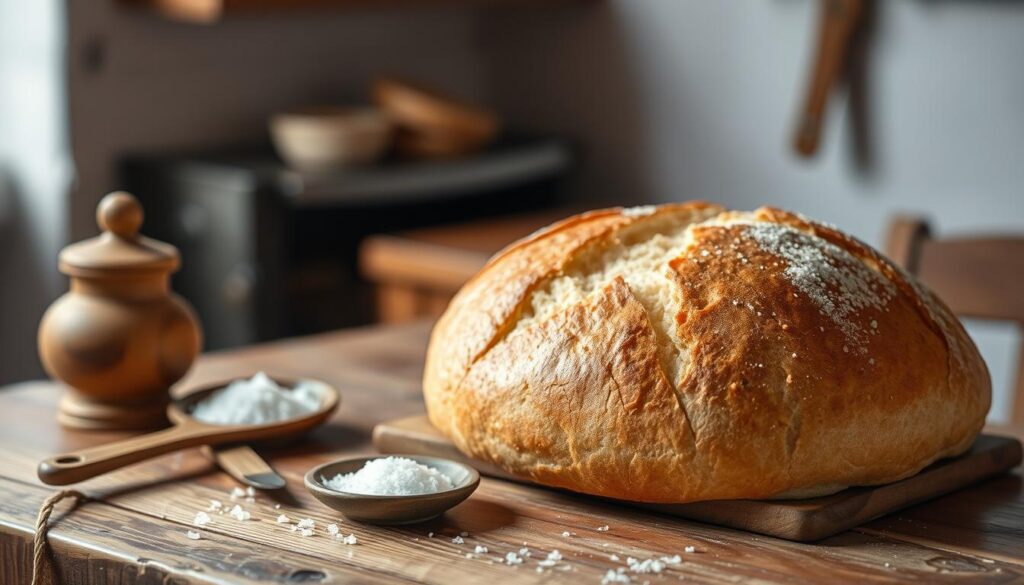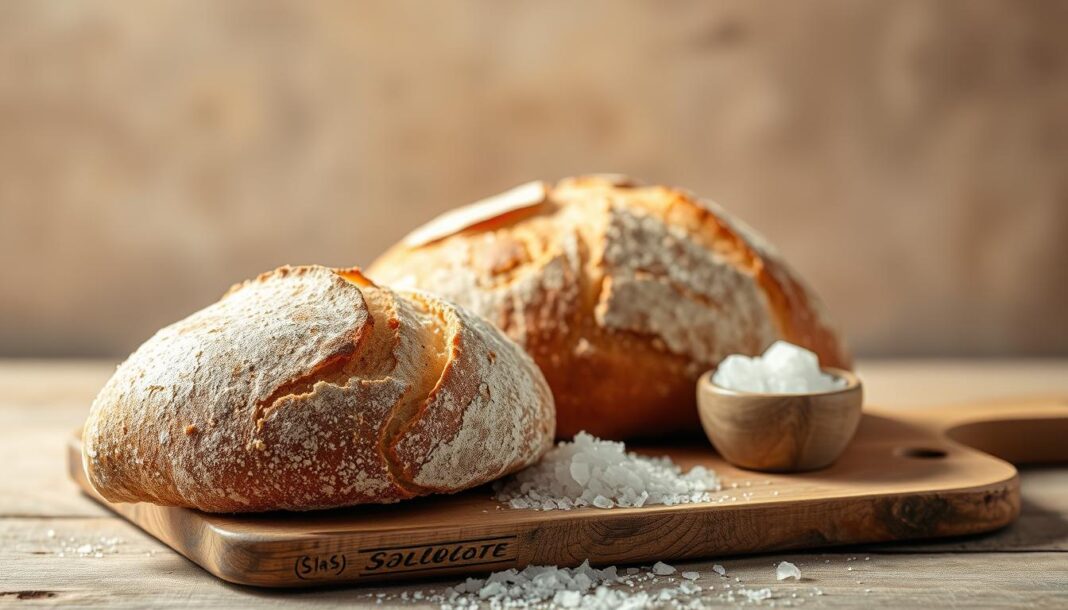We explore the fascinating tradition of offering bread and salt as a gesture of hospitality across various cultures. This custom, significant in Slavic, Nordic, Baltic, Balkan, and Middle Eastern cultures, symbolizes welcome and respect.
The pairing of these two staple foods has been a cornerstone of human sustenance for millennia, representing nourishment and preservation. As we delve into the historical and nutritional significance of this custom, we uncover the reasons behind its enduring presence in our culinary practices.
By examining the role of bread and salt in different societies, we gain insight into the universal language of food and its power to bring people together.
The Cultural Significance of Bread & Salt
The tradition of bread and salt is a profound expression of hospitality that transcends cultural boundaries. This custom is not just about offering food; it’s a symbolic gesture that conveys respect, gratitude, and warmth towards the guest.
The Universal Symbol of Hospitality
Bread and salt together form a universal language of welcome. The presentation of bread and salt to guests is a significant ritual that embodies the spirit of hospitality. When important, respected, or admired guests arrive, they are presented with a loaf of bread placed on an embroidered ritual cloth with a salt holder on top. This act is a demonstration of the host’s generosity and creates an immediate bond between the host and the guest, establishing trust and showing gratitude for the visitor’s presence.
The tradition gave rise to the Russian word “khlebosolny,” literally meaning “bready-salty,” which expresses a person’s hospitality. This linguistic connection highlights the deep psychological and cultural reasons why bread and salt became the ultimate expression of hospitality.
Bread & Salt Across Different Cultures
The bread and salt custom is shared among various cultures, including Slavic, Baltic, Romance, and Finno-Ugric peoples. Each culture has adapted this tradition to its unique customs, yet the core meaning of welcome and sustenance remains consistent. For instance, in some cultures, the bread is baked in a specific shape or flavored with certain herbs to signify different aspects of hospitality.
| Culture | Bread & Salt Tradition | Significance |
|---|---|---|
| Slavic | Bread on an embroidered cloth with salt | Hospitality and respect |
| Baltic | Similar to Slavic tradition | Welcoming and gratitude |
| Romanian | Bread with salt and herbs | Generosity and community |

Historical Origins and Evolution
As we explore the historical origins of bread and salt, we uncover a rich tapestry of cultural and culinary practices that have been woven together over thousands of years. The significance of bread and salt can be traced back to ancient times, where they played crucial roles in the daily lives of our ancestors.
Ancient Beginnings of the Tradition
The history of bread dates back an impressive 14,000 years to the Natufian ancestors, who first baked bread on hot stones in what is now known as the Levant. This early form of bread-making marked the beginning of a long-standing tradition that would evolve and spread across the globe. Salt, an essential nutrient, has also been a valuable commodity throughout history, used not only as a preservative but also as a form of currency in some cultures. The practice of combining bread and salt likely originated from the necessity of these ingredients in daily life, gradually evolving into a symbolic gesture of hospitality and peace.

Religious and Spiritual Connections
Bread and salt have deep religious and spiritual significance across multiple faiths. In the Bible, salt is mentioned dozens of times, including references to a “covenant of salt.” Bread, too, holds a central place in religious ceremonies, symbolizing nourishment and community. The use of bread and salt in religious rituals has contributed to their sacred status, transforming these everyday ingredients into powerful cultural symbols. For instance, in many cultures, bread is seen as a metaphor for basic necessities and living conditions, underscoring its importance beyond mere sustenance.
How the Tradition Spread Globally
The bread and salt custom spread globally through trade routes and cultural exchange, adapting to local ingredients and customs while maintaining its core elements. As different cultures adopted this tradition, they infused it with their unique practices, resulting in a diverse array of regional variations. For example, in some cultures, the act of breaking bread together is a sign of friendship and unity, while in others, offering bread and salt is a gesture of welcome to guests. The linguistic imprint of this custom can be seen in how the word for hospitality in several languages directly references bread and salt, highlighting the profound impact of this tradition on human interaction.
| Region | Bread Type | Salt Tradition |
|---|---|---|
| Slavic | Rye bread | Used in welcoming ceremonies |
| Middle Eastern | Pita bread | Salt served alongside bread as a sign of hospitality |
| Mediterranean | Focaccia | Salt used to flavor bread, symbolizing friendship |
To learn more about the diverse types of bread and their historical significance, visit our article on decoding bread types history. The evolution of bread and salt as cultural symbols is a testament to their enduring importance in human society, reflecting both the practical and symbolic values that these ingredients have held across time and cultures.
Regional Variations and Customs
As we explore the diverse customs surrounding bread and salt, it becomes evident that this tradition transcends geographical boundaries. The practice is a testament to the universal language of hospitality and community bonding.
Slavic and Eastern European Traditions
In Slavic cultures, bread and salt are integral to wedding customs. For instance, in Russian weddings, the bride and groom are greeted with bread and salt presented on an embroidered cloth, symbolizing prosperity and security in their marriage. Similarly, in Poland, this tradition is associated with the nobility’s hospitality, where guests are welcomed with this revered pairing.
In Bulgaria, guests are presented with pogacha, a traditional bread, and are expected to take a piece, dip it into salt, and then eat it, signifying respect and gratitude towards the hosts.
Middle Eastern and Mediterranean Practices
Arab culture also embraces the concept of “bread and salt” as a symbol of alliance and togetherness. The act of sharing a meal is seen as a bond between individuals, fostering a sense of community and cooperation. This tradition is a powerful expression of hospitality and is often observed during significant gatherings and ceremonies.
Modern Adaptations in Contemporary Society
In today’s world, the tradition of bread and salt has evolved, adapting to modern contexts such as diplomatic meetings and corporate events. For example, leaders and dignitaries are often greeted with this symbolic gesture, signifying peace and mutual respect. Moreover, the tradition has been incorporated into unique cultural practices, showcasing its versatility and enduring significance.
The essence of bread and salt remains unchanged, despite the variations in its practice across different cultures. It continues to be a powerful symbol of gratitude, welcoming, and community bonding, transcending cultural and geographical divides.
Conclusion: The Enduring Legacy of Bread and Salt
As we reflect on the diverse ways cultures express hospitality, the shared tradition of bread and salt emerges as a poignant reminder of our shared humanity. This ancient custom has traversed centuries, cultures, and even the vastness of space, symbolizing a deep-rooted human connection.
The significance of bread and salt is evident in its appearance in popular culture, such as in George R.R. Martin’s “A Song of Ice and Fire” series, where it represents a sacred “guest right.” Today, this tradition continues to be relevant, teaching children about the importance of hospitality and community building.
As we look to the future, the bread and salt custom is likely to evolve while maintaining its role as a symbol of welcome and shared humanity. It provides a sense of security and connection in a fast-paced world, offering a piece of history that remains relevant. In this way, the legacy of bread and salt endures, a testament to the power of tradition in contemporary society.


